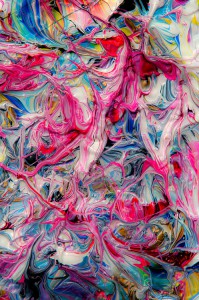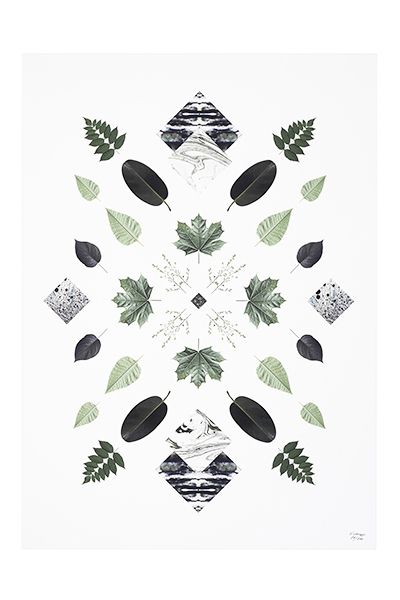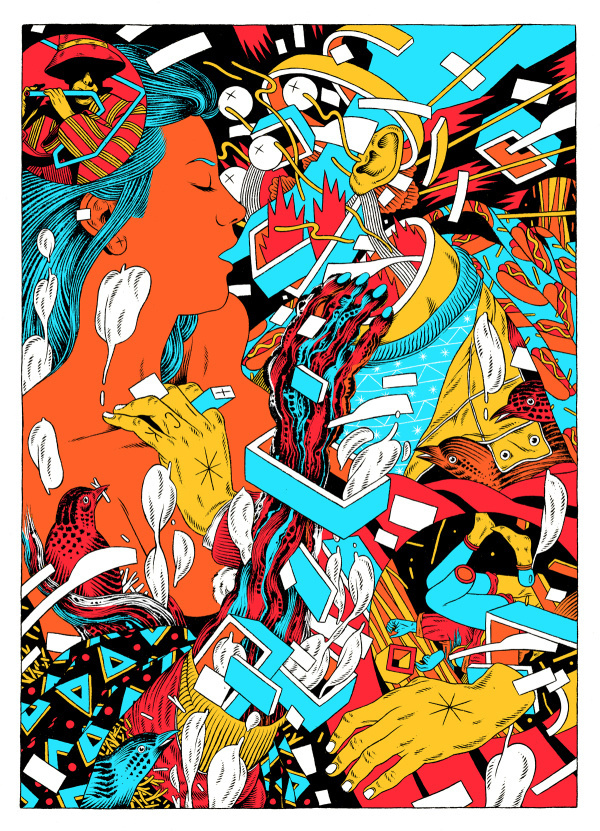Elements of d e s i g n
1) Colour
Colour is light reflected off objects, and can be either warm or cool. There are 3 main characteristics in colour:
- Hue, which is the name given to a colour
- Intensity, which refers to the strength (brightness or dullness) of the color
- Value
Value refers to how light or dark it is, and can be used to create different moods. Dark colors in a composition suggest a lack of light and can often convey a sense of mystery or foreboding. Light colors often describe a light source or reflected light. Value is also called tone, and can be used to define the centre of interest in a composition.
2) Shape
A shape is a two dimensional area that stands out from the space next to or around. Shapes have only height and width, and are usually defined by a line (contour). Shapes can also have an implied boundary, created by differences of value, color, or texture.
3) Texture
Texture is the surface quality of an object that we sense through touch. In design, texture can be physical (tactile) or visual. Visual texture gives a visual sense of how an object depicted would feel in real life if touched though the use of color, line, and shading.
4) Space
Space refers to the area within the frame, and an illusion of space can be achieved through perspective drawing techniques and shading.
- Negative space is the area in between, around, through or within an object
- Positive spaces are the areas that are occupied by an object and/or form.
5) Form
Form is three-dimensional as it has depth, width and height. It has volume (or percieved volume), and can be defined by light and dark or the presence of shadows on an object.
- geometric shapes and forms are mathemetical and orderly
- organic shapes and forms are typically irregular, can be found in nature
7) Line
A line is an identifiable path created by moving objects in space. It has width, direction and length, and is often used to define edges of a form. There are horizontal, vertical, curved and diagonal lines, which suggest different emotions.
Principles of D e s i g n
1) Balance
Balance in design is the distribution of the visual weight of objects, colours, textures and space to create visual equilibrium. A balanced composition has stability and structure.
- Symmetrical balance (symmetry) occurs if the elements used on one side of the design are similar to those on the other side
- Asymmetrical balance occurs if the elements differ on each side but still even each other out
- Radial balance is achieved when elements are arranged around, and seem to radiate out from a central point in the composition
2) Proportion
Proportion refers to the relative size and scale of the various elements in a design. It focuses on the relationship between the elements, and can be used to direct the viewer’s attention to a certain point of the composition. For instance, dominance can be used to create emphasis and add interest.
3) Rhythm
Rhythm is created when one or more elements of design are repeated (pattern) to create a feeling of organized movement. When viewed, the eye follows a regular arrangement of motifs, creating predictability and order in a composition.
- Linear rhythm focuses on the flow of an individual line, and the timed movement of the viewer’s eye. It is not as dependent on pattern.
- Repetition uses patterns to achieve timed movement
- Alternation occurs when a sequence of repeating motifs are presented in turn
- Gradation uses related motifs in a regular procession, such as in a sequence of events
4) Emphasis
Emphasis, or the point of focus, refers to the part of the composition that most strongly draws the viewer’s attention. This is often created through contrast in size, colour, textures and shapes, or an interruption in the fundamental pattern of the composition. Primary and secondary emphases can exist within the same composition.
5) Unity
Unity is the feeling of harmony between all elements of a composition. It gives coherence and a sense of completeness to the entire composition, and can be achieved through consistent use of the elements and principles of design, such as pattern, form and colour. Unity can also exist in variety as long as there is a common thread running through the composition.
For instance, the repeated use of the same range of colours creates unity in the overall composition, despite the use of various, unconnected images.
6) Movement
Movement refers to the path the viewer’s eye traces through the composition. It can be actual, such as through a pattern. Movement can also be implied through the use of line, shape, form, and texture, as well as the placement of elements, creating a visual flow.
Citations
- “Array in Pattern.” Designspiration RSS. Accessed September 21, 2015. http://designspiration.net/image/1177458214801/.
- “Bicicleta Semfreio | PICDIT in // Illustration.” Designspiration RSS. Accessed September 21, 2015. http://designspiration.net/image/534385612503/.
- “Design Elements and Principles.” Wikipedia. Accessed September 21, 2015. https://en.wikipedia.org/wiki/Design_elements_and_principles.
-
“Elements and Principles of Design.” John Lovett. Accessed September 21, 2015. http://www.johnlovett.com/test.htm.
-
“Elements and Principles of Design.” Incredible Art. Accessed September 21, 2015. http://www.incredibleart.org/files/elements2.htm.
-
“James Nares in // Painting.” Designspiration RSS. Accessed September 21, 2015. http://designspiration.net/image/534386412748/.
-
“Principles of Design.” Accessed September 21, 2015. http://char.txa.cornell.edu/language/principl/principl.htm.
-
“Principles of Design.” The J. Paul Getty Museum. Accessed September 21, 2015. https://www.getty.edu/education/teachers/building_lessons/principles_design.pdf.
-
“Principles of Design.” Understanding Formal Analysis. Accessed September 21, 2015. http://www.getty.edu/education/teachers/building_lessons/formal_analysis2.html.
- “Rädda Barnens Designshop är Nedlagd – Rädda Barnen.” Rädda Barnen. Accessed September 21, 2015. http://www.raddabarnen.se/press/nyheter/2014/nu-stanger-design-for-barns-rattigheter/.
- “The Principles of Design.” J6 Design. Accessed September 21, 2015. http://www.j6design.com.au/6-principles-of-design/.
-
“Barbara Kitallides.” Estelle Mademoiselle’s Blog. March 25, 2014. Accessed September 21, 2015. https://todaysartist.wordpress.com/2014/03/25/barbara-kitallides-violent-softness-douceur-violente-today-artist/.
-
“THE COLOUR WHISPERER: BARBARA KITALLIDES.” Mesop. July 12, 2013. Accessed September 21, 2015. http://www.mesop.com/blog/tag/ARTIST.
-
LeManoosh. Accessed September 21, 2015. http://lemanoosh.com/post/54657528228/httpunpredictabloodeviantartcomartspirals-35.
-
This Ain’t a Shoulder with a Chip or an Ego. Accessed September 21, 2015. http://loubis-and-champagne.tumblr.com/post/51303807266.
-
“20 Creative Negative Space Design Inspiration | Web & Graphic Design | Bashooka.” Bashooka. February 19, 2013. Accessed September 21, 2015. http://bashooka.com/inspiration/negative-space-design/.











You must be logged in to post a comment.